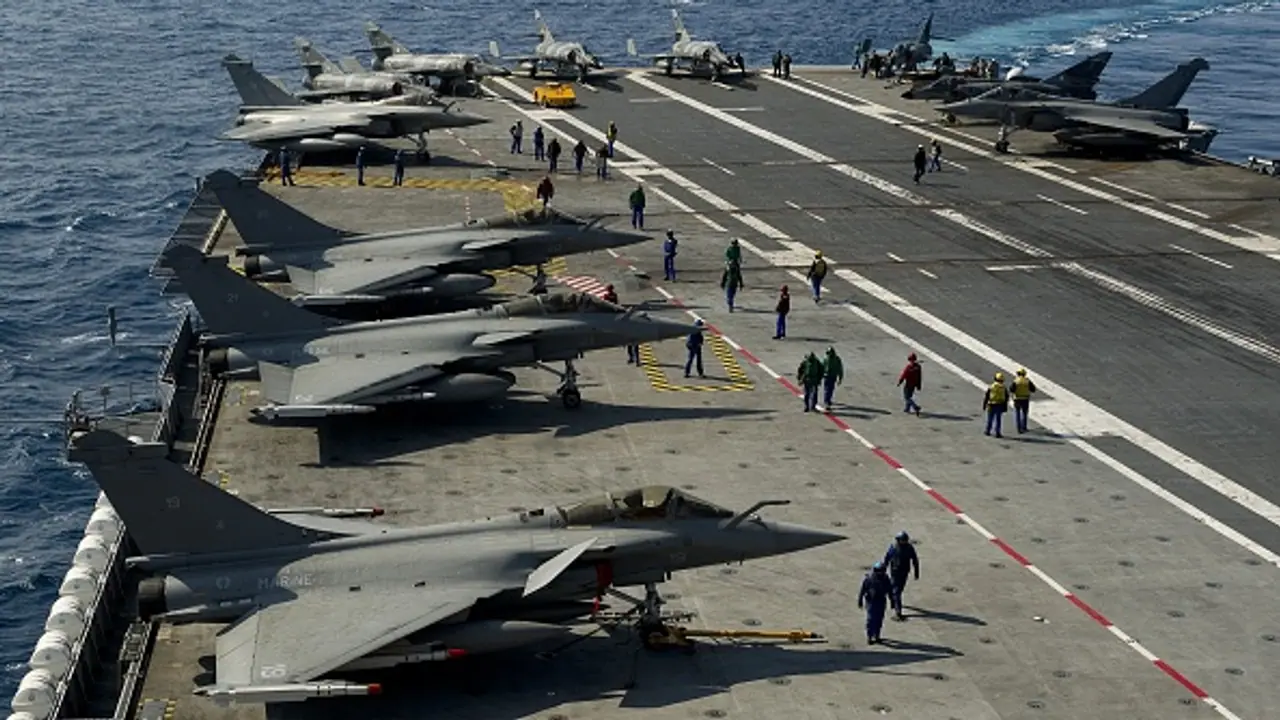India signed a ₹63,000 crore deal with France to acquire 26 Rafale-M jets for deployment on INS Vikrant, boosting maritime security while the indigenous TEDBF program continues development for long-term naval aviation needs.
New Delhi: India and France on Monday inked a contract worth Rs 63,000 crore to procure 26 Rafale (M) fighter aircraft for the Indian Navy. The procured fighters would be deployed on the navy’s sole indigenous aircraft carrier — INS Vikrant.

The induction of Rafale (M) jets would replace the Russian-origin Mig-29K.
During the contract signing ceremony in Delhi, Defence Secretary RK Singh and the Indian Navy vice chief Vice Admiral K Swaminathan represented the Indian side while the French side was represented by Ambassador Dr Thierry Mathou.
“This strategic acquisition is expected to significantly strengthen India’s maritime security,” a Navy official said.
The government-to-government (G2G) deal signed Monday was got approval earlier this month from Prime Minister Narendra Modi-headed Cabinet Committee on Security (CCS).
It is noteworthy to mention here that the G2G is a mode of defence procurement involving direct negotiation between the governments of the importer country and the exporter country.
As per the plan, India would procure 22 single-seater and four twin-seater trainer aircraft for the navy.
These carrier-capable fighters are intended to be deployed aboard INS Vikrant, the Navy’s indigenous aircraft carrier.
The induction of Rafale (M) in the navy is a short-term solution as the work on TEDBF (Twin-engine Deck Based Fighter) is underway.
For the long-term solution, India has been working on developing indigenous twin-engine deck-based fighters to meet the requirements of the force for carrier-based operations.
Since TEDBF development is a time taking process, the Indian Navy decided to go in for the acquisition of Rafale (M) to meet its requirement.
Designed for naval operations, Rafale-M jets are equipped with reinforced undercarriages and are compatible with the Indian Navy’s STOBAR (Short Take-Off But Arrested Recovery) system used on carriers.
Aircraft launched from these carriers can operate far from the coastline, giving India a crucial strategic edge in the region.


